
The Nine-banded Armadillo (Dasypus novemcinctus), also known as the nine-banded long-nosed armadillo or common long-nosed armadillo, is a mammal found in North, Central, and South America, making it the most widespread of the armadillos. Its ancestors originated in South America, and remained there until the formation of the Isthmus of Panama allowed them to enter North America as part of the Great American Interchange. The nine-banded armadillo is a solitary, mainly nocturnal animal, found in many kinds of habitats, from mature and secondary rainforests to grassland and dry scrub. It is an insectivore, feeding chiefly on ants, termites, and other small invertebrates. The armadillo can jump 3–4 ft (91–122 cm) straight in the air if sufficiently frightened, making it a particular danger on roads. It is the state small mammal of Texas.
North American subspecies exhibit reduced genetic variability compared with the subspecies of South America, indicating the armadillos of North America are descended from a relatively small number of individuals that migrated from south of the Rio Grande.
Nine-banded Armadillo in the Southern Pantanal, Brazil
Nine-banded armadillos generally weigh from 2.5–6.5 kg (5.5–14.3 lb), though the largest specimens can scale up to 10 kg (22 lb). They are one of the largest species of armadillos. Head and body length is 38–58 cm (15–23 in), which combines with the 26–53 cm (10–21 in) tail, for a total length of 64–107 cm (25–42 in). They stand 15–25 cm (5.9–9.8 in) tall at the top of the shell. The outer shell is composed of ossified dermal scutes covered by nonoverlapping, keratinized epidermal scales, which are connected by flexible bands of skin. This armor covers the back, sides, head, tail, and outside surfaces of the legs. The underside of the body and the inner surfaces of the legs have no armored protection. Instead, they are covered by tough skin and a layer of coarse hair. The vertebrae attach to the carapace. The claws on the middle toes of the forefeet are elongated for digging, though not to the same degree as those of the much larger giant armadillo of South America. Their low metabolic rate and poor thermoregulation make them best suited for semitropical environments. Unlike the South American three-banded armadillos, the nine-banded armadillo cannot roll itself into a ball. It is, however, capable of floating across rivers by inflating its intestines, or by sinking and running across riverbeds. The second is possible due to its ability to hold its breath for up to six minutes, an adaptation originally developed for allowing the animal to keep its snout submerged in soil for extended periods while foraging.[6] Although nine is the typical number of bands on the nine-banded armadillo, the actual number varies by geographic range. Armadillos possess the teeth typical of all sloths and anteaters. The teeth are all small, peg-like molars with open roots and no enamel. Incisors do form in the embryos, but quickly degenerate and are usually absent by birth.
The nine-banded armadillo evolved in a warm, rainy environment, and is still most commonly found in regions resembling its ancestral home. As a very adaptable animal, though, it can also be found in scrublands, open prairies, and tropical rainforests. It cannot thrive in particularly cold or dry environments, as its large surface area, which is not well insulated by fat, makes it especially susceptible to heat and water loss. Recently, nine-banded armadillo have been found as far north as Virginia, with several studies suggesting this could get more common as temperatures rise.
The nine-banded armadillo has been rapidly expanding its range both north and east within the United States, where it is the only regularly occurring species of armadillo. The armadillo crossed the Rio Grande from Mexico in the late 19th century, and was introduced in Florida at about the same time by humans. By 1995, the species had become well established in Texas, Oklahoma, Louisiana, Arkansas, Mississippi, Alabama, Georgia and Florida, and had been sighted as far afield as Kansas, Missouri, Tennessee, Kentucky, and South Carolina. A decade later, the armadillo had become established in all of those areas and continued its migration, being sighted as far north as southern Nebraska, southern Illinois, and southern Indiana. The primary cause of this rapid expansion is explained simply by the species having few natural predators within the United States, little desire on the part of Americans to hunt or eat the armadillo, and the animals' high reproductive rate. The northern expansion of the armadillo is expected to continue until the species reaches as far north as Ohio, Pennsylvania, New Jersey and Connecticut, and all points southward on the East Coast of the United States. Further northward and westward expansion will probably be limited by the armadillo's poor tolerance of harsh winters, due to its lack of insulating fat and its inability to hibernate. As of 2009, newspaper reports indicated the nine-banded armadillo seems to have expanded its range northward as far as Omaha, Nebraska in the west, and Kentucky Dam and Evansville, Indiana, in the east In 1995, armadillos were only seen in the southern tip of South Carolina, and within two to three years, they had swept across most of the state. In late 2009, North Carolina began considering the establishment of a hunting season for armadillo, following reports that the species has been moving into the southern reaches of the state (roughly between the areas of Charlotte and Wilmington). Outside the United States, the nine-banded armadillo ranges southward through Central and South America into northern Argentina and Uruguay, where it is still expanding its range.
Nine-banded Armadillo from the Southern Pantanal



































































































Nine-banded Armadillo (Dasypus novemcinctus novemcinctus) from Aransas Texas
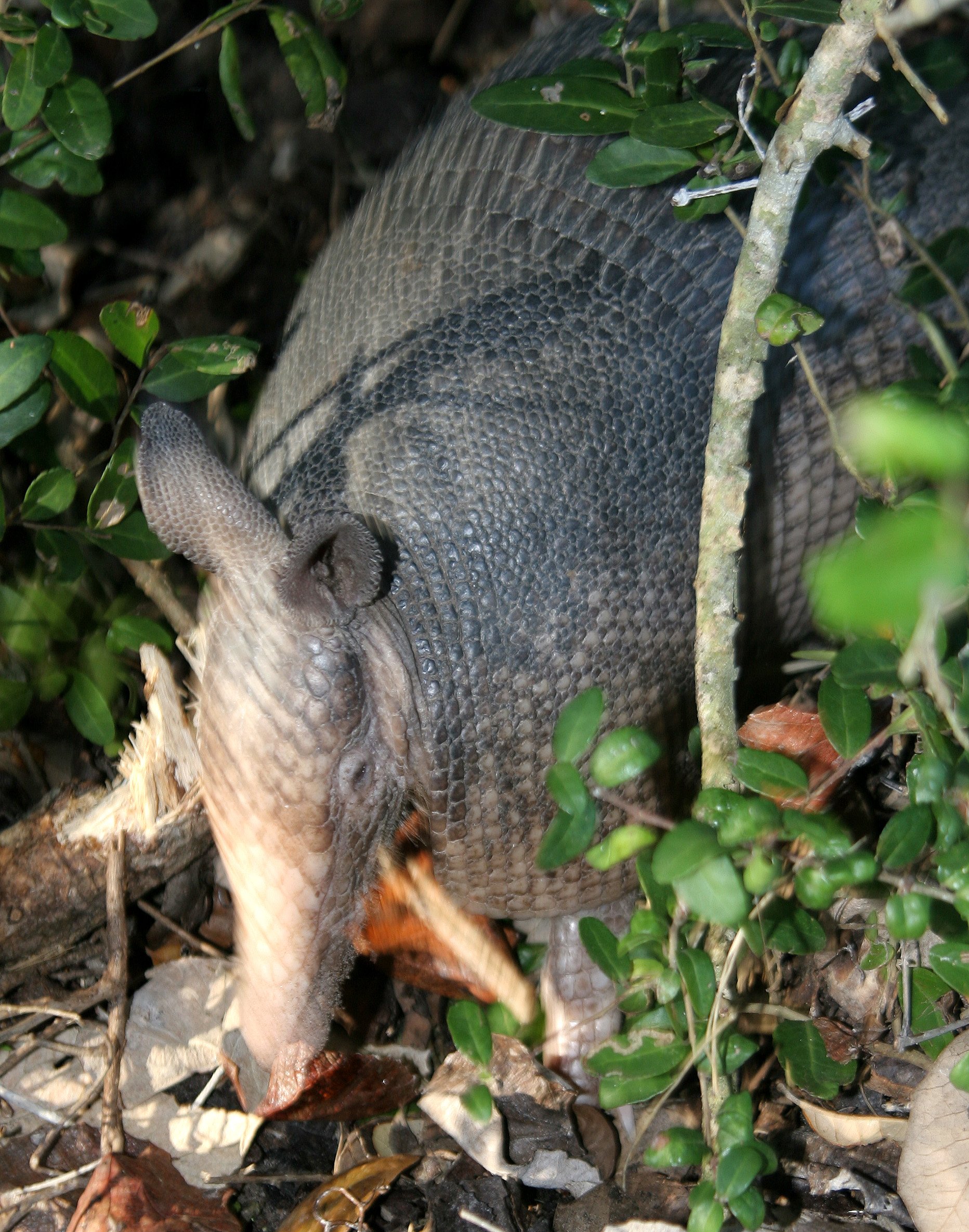
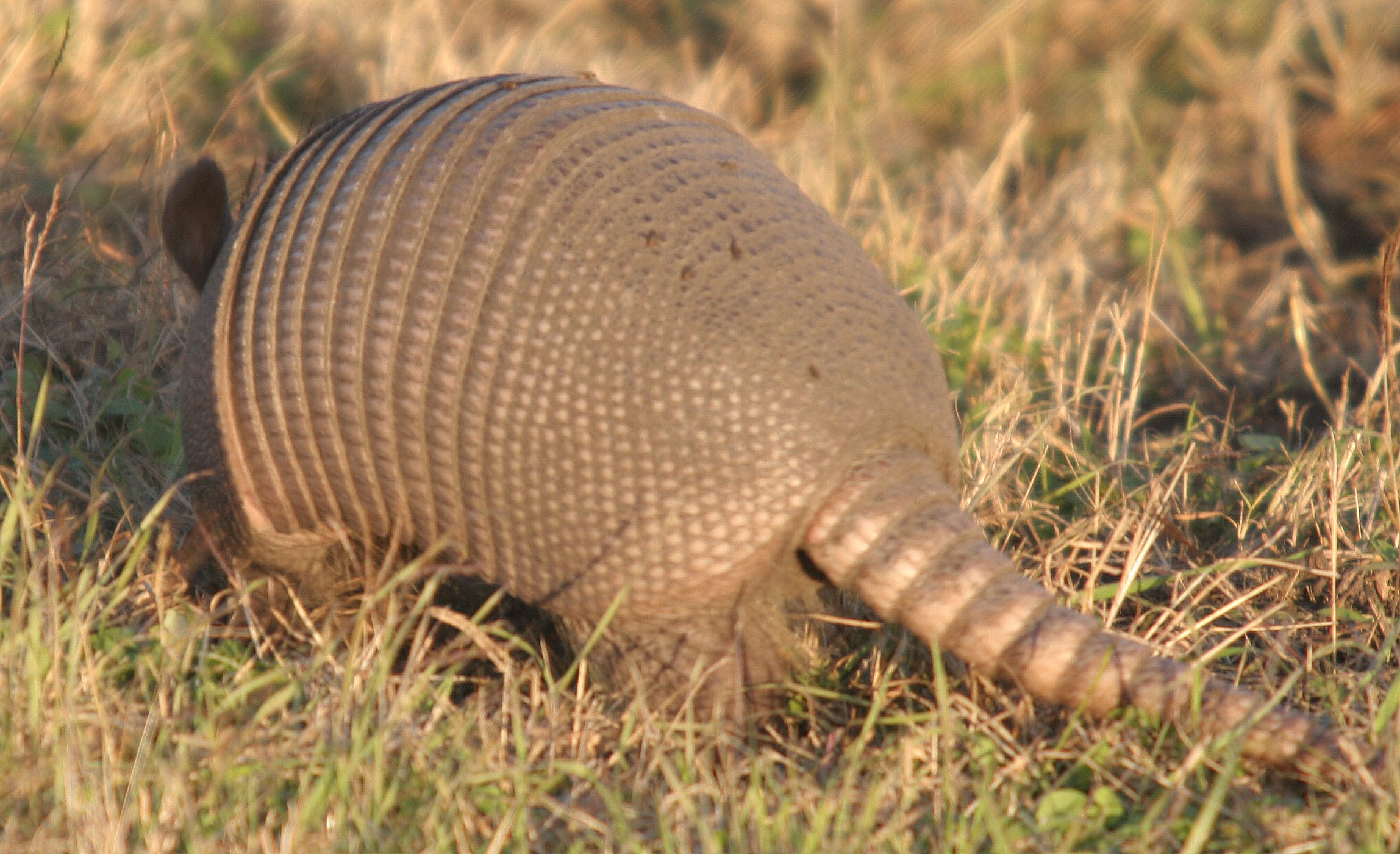
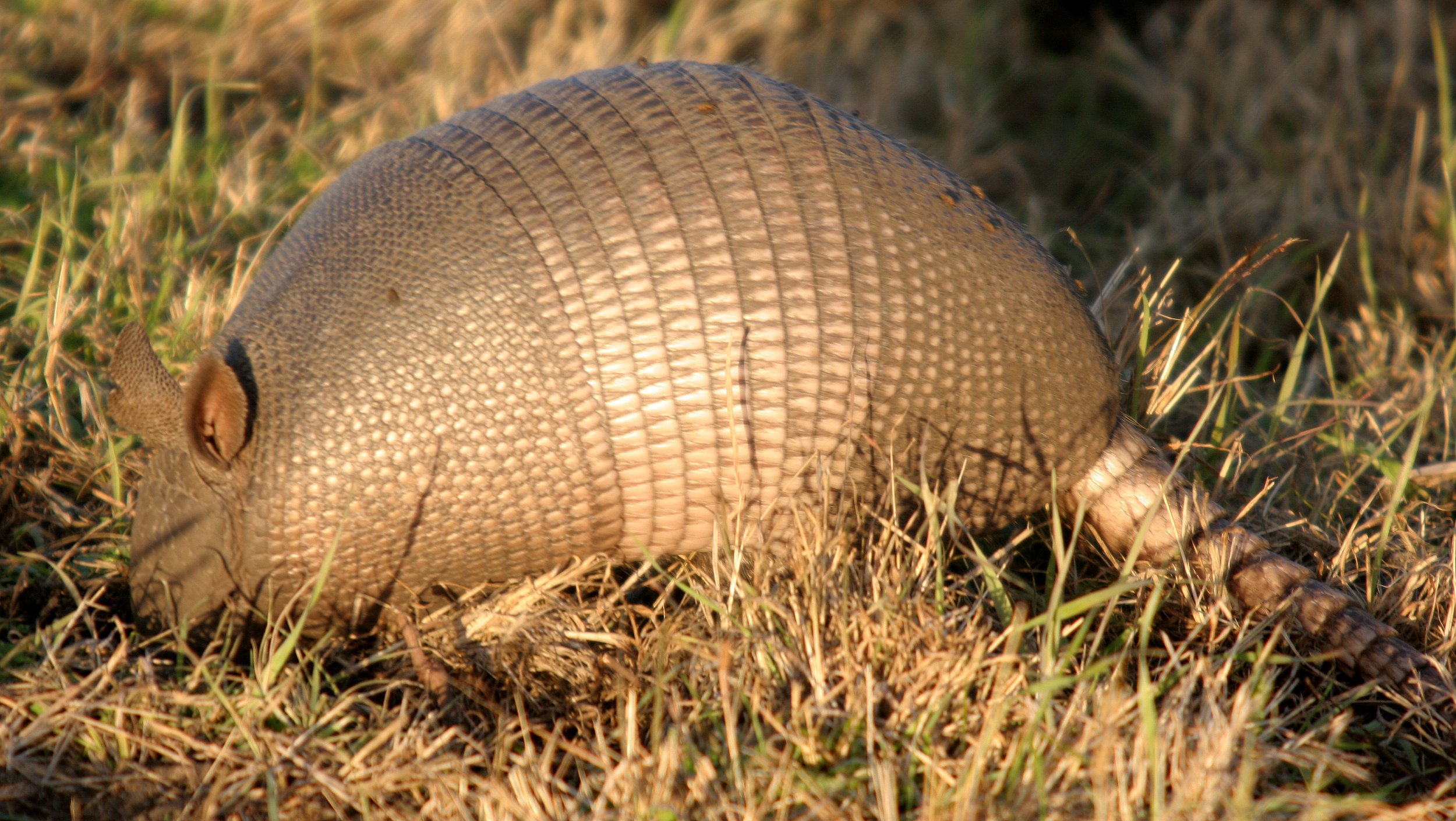
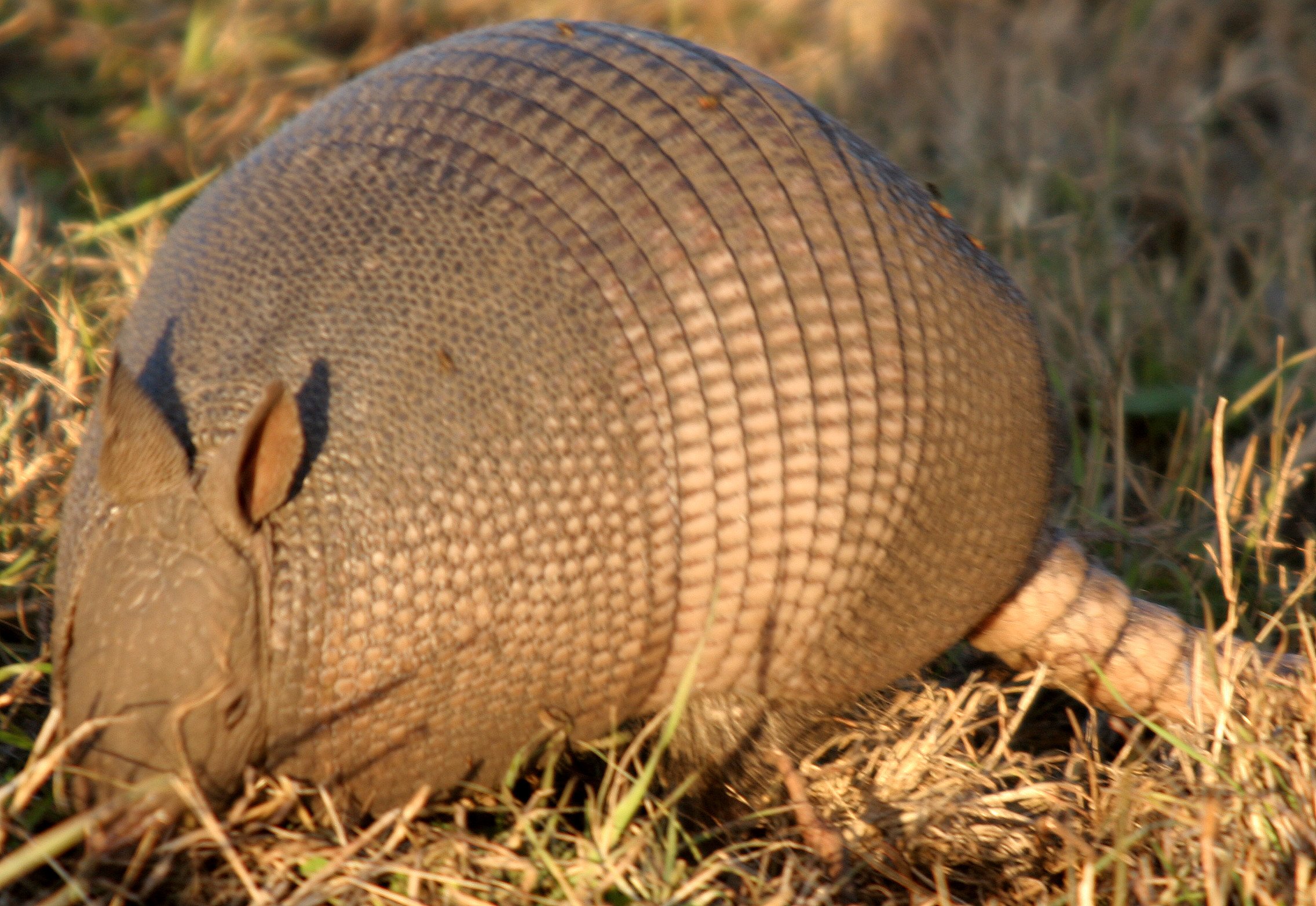
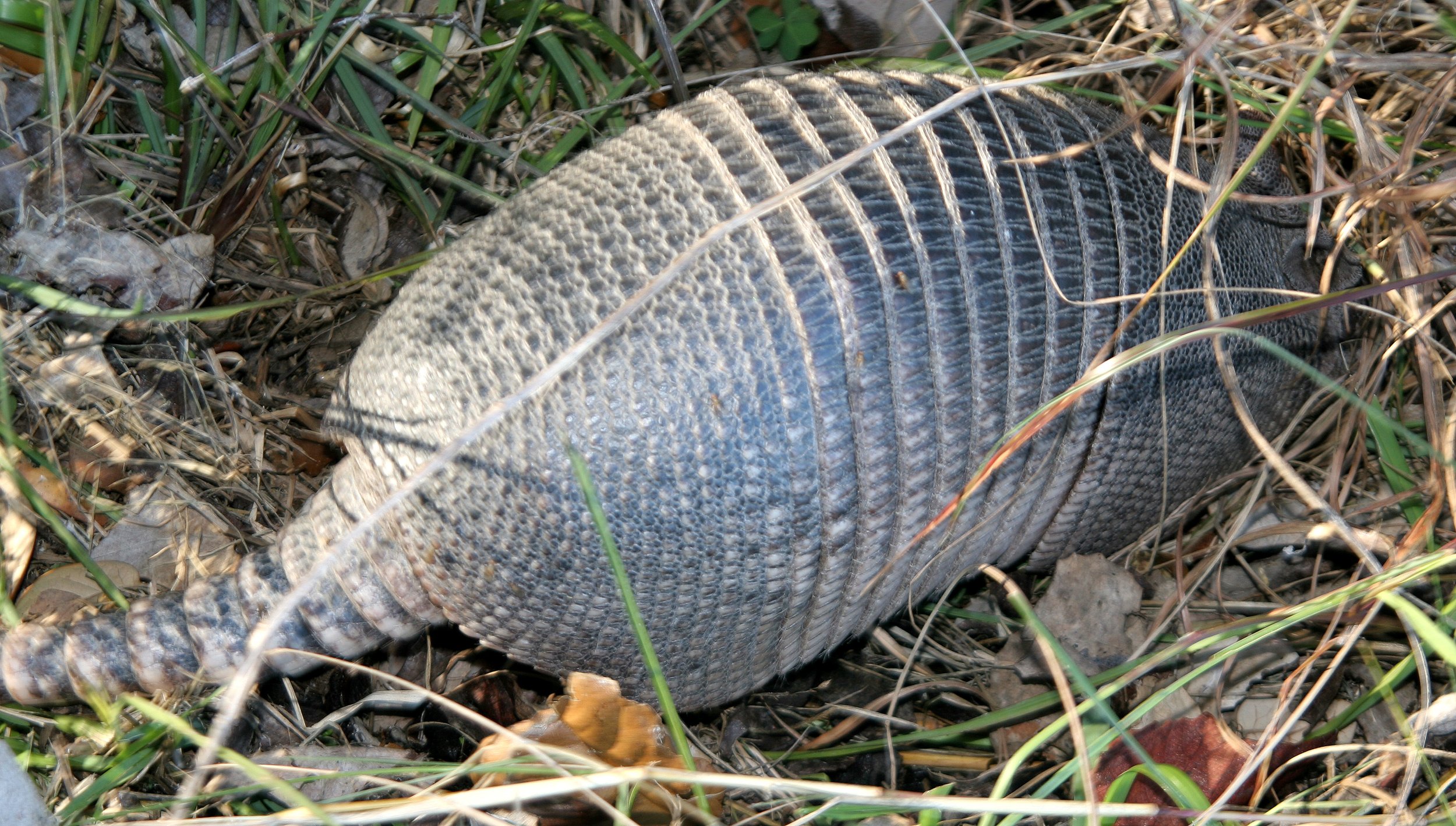
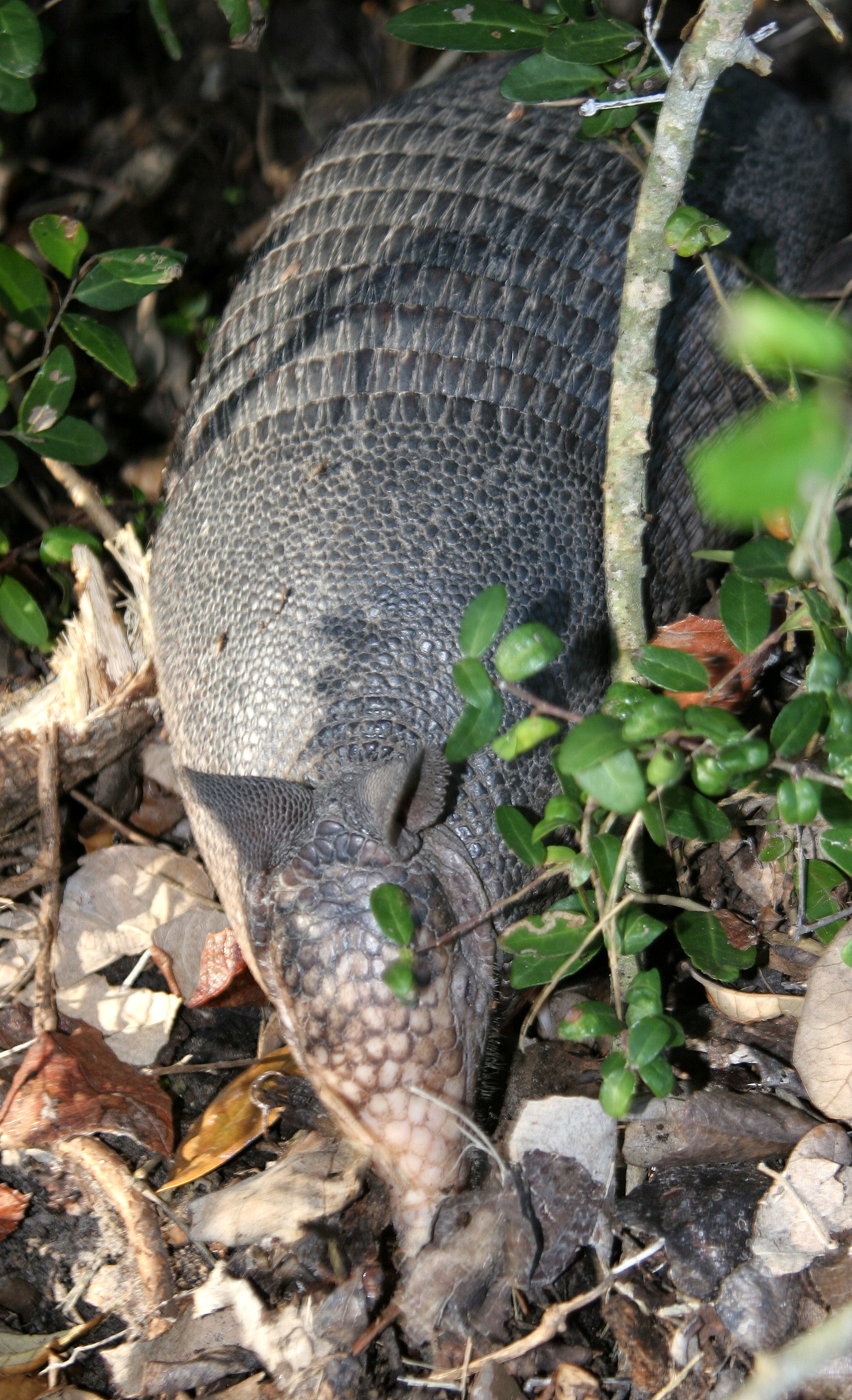
Mexican Nine-banded Armadillo (Dasypus novemcinctus mexicanus) Santa Rosa National Park, Costa Rica





